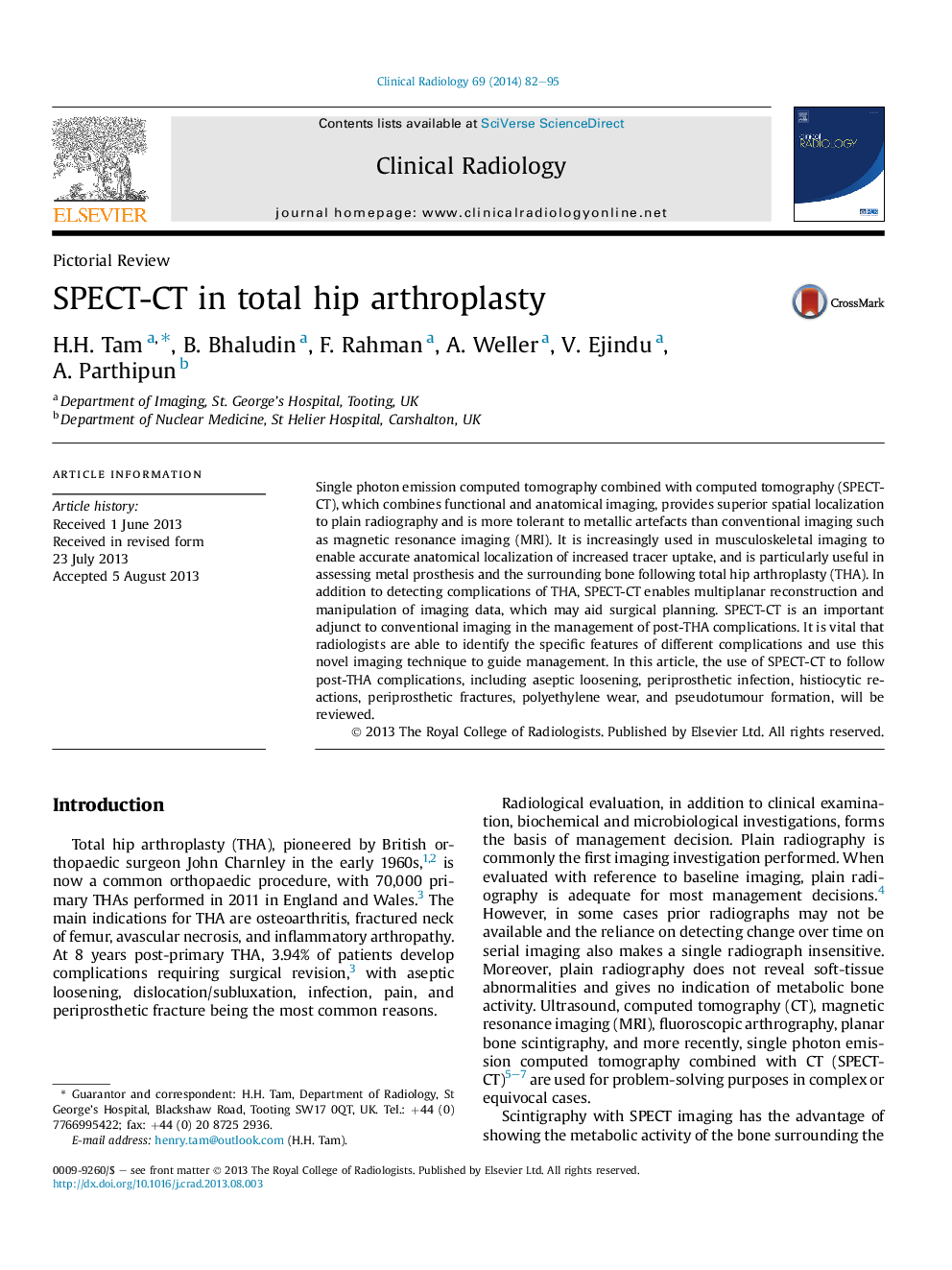| Article ID | Journal | Published Year | Pages | File Type |
|---|---|---|---|---|
| 3981721 | Clinical Radiology | 2014 | 14 Pages |
Single photon emission computed tomography combined with computed tomography (SPECT-CT), which combines functional and anatomical imaging, provides superior spatial localization to plain radiography and is more tolerant to metallic artefacts than conventional imaging such as magnetic resonance imaging (MRI). It is increasingly used in musculoskeletal imaging to enable accurate anatomical localization of increased tracer uptake, and is particularly useful in assessing metal prosthesis and the surrounding bone following total hip arthroplasty (THA). In addition to detecting complications of THA, SPECT-CT enables multiplanar reconstruction and manipulation of imaging data, which may aid surgical planning. SPECT-CT is an important adjunct to conventional imaging in the management of post-THA complications. It is vital that radiologists are able to identify the specific features of different complications and use this novel imaging technique to guide management. In this article, the use of SPECT-CT to follow post-THA complications, including aseptic loosening, periprosthetic infection, histiocytic reactions, periprosthetic fractures, polyethylene wear, and pseudotumour formation, will be reviewed.
